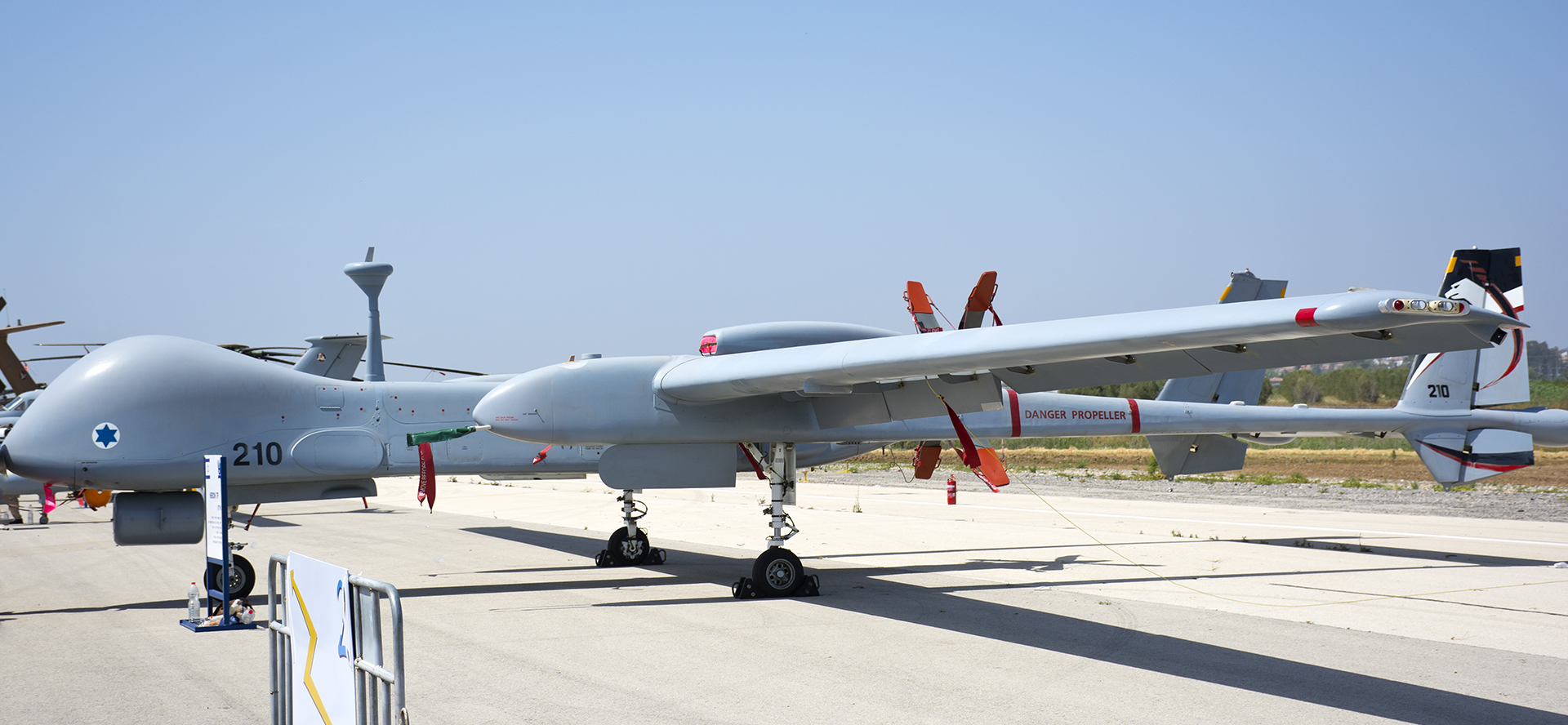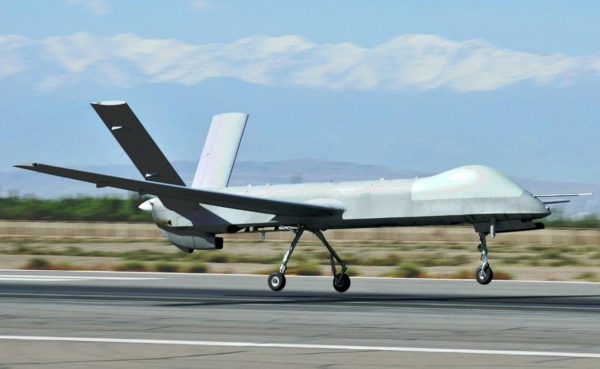Around this time last year (2020), Azerbaijan had conquered almost the entire Armenian exclave of Nagorno-Karabakh. If the war had attracted global attention, it was mainly because of one feature.
And that was the widespread use of armed drones of Turkish production, which decimated and demoralized the unprepared Armenians from the air.
In fact, the importance of armed drones nowadays is such that almost all the major countries are acquiring more and more armed drone systems. A side effect of this proliferation is an increase in their exports, a fact that was conclusively proved last week with the release of two reports.
On November 25, Reportlinker.com announced the release of ‘Aircraft Insulation Market by Platform, Type, Material, Application and Region – Forecast to 2026’. According to the report, the global aircraft insulation market size is projected to grow from $5.5 billion in 2021 to $8.2 billion by 2026, at a CAGR of 8.3% from 2021 to 2026.
It says that the market is driven by various factors, such as an increase in demand for lightweight materials, the introduction of advanced acoustic and fire-resistant materials resulting in safer operations of aircraft, declining cost of composite materials, and increasing demand for military helicopters.

What is the linkage between this and drones? Well, drones, like other platforms in the aerospace market, use composite materials in their manufacture. These include concrete, fiber-reinforced polymer, metal composites, and ceramic composites such as Polymer Matrix Composites (PMCs), Ceramic Matrix Composites (CMCs), and Metal Matrix Composites (MMCs). These composites have heat absorption capacity, less weight, noise cancellation capability, vibration absorbance, etc.
These materials are combined to make composite materials that have high strength, flexibility, and are lightweight as compared to aluminum or steel. Furthermore, these materials are corrosion-resistant, which keeps the covers of an aerostructure tight under any weather condition.
The number of drones in the sky above Nagorno-Karabakh is apparently so large that an Azerbaijani Orbiter UAV can be seen flying right through the target footage of a Bayraktar TB2 UAV striking a D-30 howitzer (one of four probably struck this morning) https://t.co/gOwit7XZLe pic.twitter.com/XvdN1kou6H
— Oryx (@oryxspioenkop) October 1, 2020
Huge Demand For Drone-Making Materials
Given this, if the market for these materials has grown up, it means that more aerostructures are being built.
Based on this, the report says that the UAV platforms happen to be the fastest segment of the aircraft insulation market. It is not much affected by the COVID-19 outbreak. And major players of this market are DuPont (US), Triumph Group, Inc. (US), Transdigm Group, Inc. (US), Zotefoams (UK), BASF SE (Germany), Rogers Corporation (US), Safran Group (France), and Evonik Industries (Germany).

The other report coming on November 23, estimates that the Global Defense Drone Market will generate $16,902.0 million and exhibit a CAGR of 7.9% from 2021 to 2028, owing to increasing defense expenditure in many countries around the world.
The Asia-Pacific region is anticipated to observe the fastest growth by 2028, the report, which, incidentally, is prepared by “Research Dive”, a market research firm based in Pune, India, says.
The report has segmented the global defense drone market into product type, payload, application, range, and region:
-
Based on product type, the multirotor systems sub-segment is estimated to surpass $6,869.4 million by 2028 and witness lucrative growth during the forecast period. This sub-segment growth of the global defense drone market is mainly due to the surge in the development of unmanned rotorcrafts and quadcopters.
-
Based on payload, the small drones sub-segment is estimated to generate a revenue of $7,901.2 million by 2028 and hold dominating market share over the forecast period. This is majorly owing to the effectiveness of small drones to lift a payload up to 25 kg, and perform computerized command, communication, control, and information functions.
-
Based on application, the combat operations sub-segment is expected to generate a revenue of $6,556.2 million by 2028 and is predicted to witness the fastest growth during the analysis period. This is mainly due to the rising need for upgrading the existing unmanned aerial attack systems for threat elimination missions and target identification in military aviation.
-
Based on range, the short-range sub-segment accounted for $3,652.9 million in 2020 and is anticipated to hold the majority of the market share during the forecast period. This is mainly due to low noises generated by short-range drones owing to which the adversaries are less likely to detect their presence. Besides, short-range drones can hover over an area that is longer than manned aircraft, which is another factor predicted to boost the sub-segment growth in the defense drone market by 2028.
-
Based on region, the Asia-Pacific market for defense drones is expected to surpass $4,071.7 million by 2028 and witness the fastest growth in the global industry over the forecast period. The increasing military expenditure of major countries in the region, such as China, India, Japan,
Australia, and others is the major factor predicted to boost the regional market growth by 2028.
America Leading The Race
The Research Drive report has identified the following as the 10 most important players in the UAV market:
1. General Atomics Aeronautical Systems, Inc.
2. Northrop Grumman Corporation,
3. Lockheed Martin Corporation
4. Elbit Systems Ltd.,
5. Textron Systems,
6. AeroVironment, Inc.
7. Thales Group
8. Boeing
9. Israel aerospace industries ltd
10. SAAB Group.
However, it is also known that Chinese, Iranian and Turkish drones have found their way into the market. Turkish Bayraktar TB2 is now export-hit and Ankara has ensured that the development and production of the drone can run as autonomously as possible. Among TB2’s customers are now Ukraine and Poland.
The US, of course, is the leader in the market as it has used drones in conflicts for long, particularly in asymmetric conflicts with low intensity – both to cover ground groups from the air and to target suspected terrorist targets. In Afghanistan, Pakistan, Iraq, and Yemen, the US MQ-1 Predator and MQ-9 Reaper systems have been used extensively.
For Russia, drones have fulfilled a supportive role to its Army, namely that of visual and electronic target reconnaissance and detection. Moscow is also developing stealth drones such as the Okhotnik, which would be used in high-intensity scenarios. In fact, analysts say that Russia has jumped almost directly from reconnaissance to stealth drones.
Proliferation Of Military Drones
All told, if military drones are becoming increasingly indispensable for the armed forces all over the world, there are essentially four reasons behind this trend.
One, they are less costly but pretty effective as operational intelligence platforms for proper data flow and they provide real-time surveillance to detect ballistic missile threats.
Two, they can be used in remote locations where the communication systems are poor. They are thus able to provide vital data, irrespective of location. As a result, the control center of the user is able to plan and prepare for uncertain attacks. They, thus, help in making well-informed decisions.

Three, and this is a corollary of the above, in heavy fighting zones, drones help in providing information to the command center to identify the targets better, improve safety, and protect infrastructures from any kind of external threats or risks. In this sense, they greatly reduce putting military personnel in harm’s way or in combat. They save lives.
Four, drones are proving also lethal to enemy combats as regular airplanes. This means that it is easier to neutralize enemy power using a drone with minimal human casualties.
However, the biggest criticism against military drones is that they often cause collateral damages to civilian lives and property. This is because they do not have the capacity to make judgments on whether to deploy or not. No wonder why US MQ-1 Predator and MQ-9 Reaper are such dirty words in Pakistan, Afghanistan, Iraq, and Syria.

But then, modern warfare is increasingly becoming insensitive to civilian opinions. National interests weigh over notions of rights and wrong in fighting wars, particularly when the enemies happen to be those who have the scantiest respect for these very notions of rights and wrongs.
And that explains why the armed drone market is growing and will grow further.
- Author and veteran journalist Prakash Nanda has been commenting on politics, foreign policy on strategic affairs for nearly three decades. A former National Fellow of the Indian Council for Historical Research and recipient of the Seoul Peace Prize Scholarship, he is also a Distinguished Fellow at the Institute of Peace and Conflict Studies. CONTACT: prakash.nanda@hotmail.com
- Follow EurAsian Times on Google News




